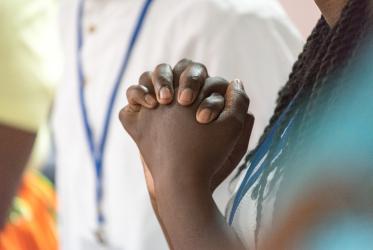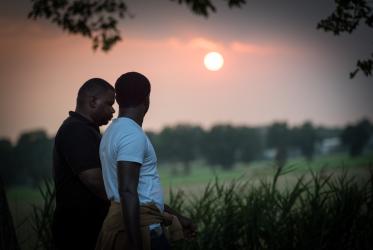The word pilgrimage is a linguistic double-edged sword. On the one hand, it connotes a kind of movement towards a higher, even spiritual or religious, end that one has in mind. When thought of in this positive sense, I think of the pilgrimages of the desert fathers who migrated into the sun and sand longing to be alone with God and who were eager to shed off the weight of this world so that they could experience His world more intimately.
However, in our post-colonial context, the word pilgrimage equally stirs up mixed emotions, most of which might be negative, particularly amongst Indigenous peoples across the globe.
For many Indigenous peoples of North America, or what they call Turtle Island, the word pilgrimage is synonymous with the year 1620 when the Mayflower pilgrims led by William Bradford landed at Plymouth Rock. In what would become the first permanent settlement of white men in New England, these pilgrims were bent on a religious purpose of their own.
With the Church on their side and the Doctrine of Discovery beneath them, the first European pilgrims declared all Turtle Island to be terra nullius or “nobody’s land” and thus ripe for the taking by any civilized person who could cause it to flourish for God’s Kingdom.
As such, the word pilgrimage evokes the image of foreign invasion, merciless conquest, and the gradual destruction of a culture and people that had managed to thrive on its own for thousands of years. In the words of the late Native American activist and scholar Vine Deloria Jr., “Many Indians...believe it would have been better if Plymouth Rock had landed on the Pilgrims than the Pilgrims on Plymouth Rock.”[1]
The reality is that many Indigenous peoples today, particularly urban dwelling Indigenous peoples, are resistant to the Church, the Good News, the person of Jesus, and the “Christian” faith for this very reason. They are skeptical and unwilling to embrace the same faith whose founding fathers in North America apathetically saw the demise of their ancestors’ way of life.
Moreover, with the more recent controversy of the Church-led residential school system which systematically assimilated Native American children into the broader Western-European way of life, the gulf between people of Christian faith and Indigenous peoples has only widened. If this, then, is the way in which many Indigenous peoples perceive and fail to appreciate the notion of pilgrimage, how ought the World Council of Churches move forward?
The pilgrimage of the World Council of Churches is first a pilgrimage of justice and then of peace. This is significant particularly as it calls to mind the popular expression amongst social justice activists, “No justice, no peace. Know justice, know peace.” That is, without true justice, without an intentional and consistent turning around of what is unjust in our world, its citizens will not be able to fully understand or experience true peace.
In the context of the pilgrimage, then, and with respect to the Indigenous peoples of North America, it is imperative that the pilgrims of the World Council of Churches work to redeem that positive sense of the word which calls its participants, not to conquest and infiltration of new lands for selfish gain, but rather towards a higher, spiritual end to walk in unity and beauty for the good of all peoples.
And what is that higher and spiritual end as it pertains to the Indigenous peoples of the world? In the words of the Rt. Rev. Mark MacDonald, “Our Pilgrimage must begin as an identification and reunion with our suffering relatives and wounded Creation. Our Pilgrimage proceeds to a place of blessing and hope where a renewed nation finds its destiny as relatives with the rest of humanity and Creation.”
In other words, as pilgrims on a journey towards justice and peace, as pilgrims who strive to show solidarity with a marginalized and oppressed people, we must first identify that injustice which continues to threaten the well-being of our Indigenous relatives.
Whether it be acknowledging the devastating legacy of the residential school system, the disproportionate figures of First Nations suicide rates, or the missing and murdered Aboriginal women in North America, the Pilgrimage of Justice and Peace must find a way to bring attention to these issues and actively promote the renewal and healing of a multitude of peoples created in God’s image.
In doing so, we can hope to redeem the concept of pilgrimage, usher in a renewed and positive understanding of the word, and experience the true peace that Jesus has left with us and gave to us (John 14:27).
[1] Deloria Jr, Vine. “The Red and the Black.” In Custer Died for Your Sins. New York: MacMillan, 1969.






